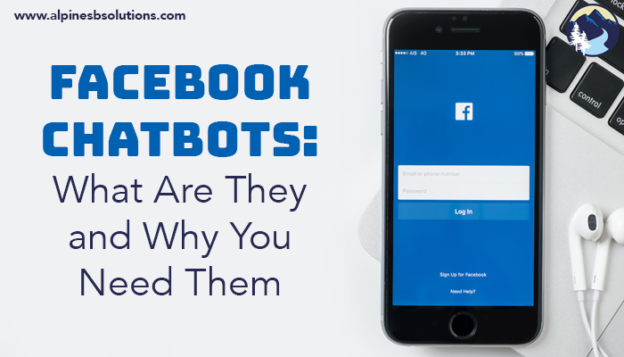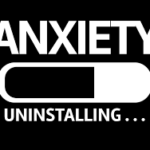In today’s digital age, technology has become an integral part of marketing efforts. As such, it’s becoming increasingly important for businesses to have a Tech & Marketing Manager on their team. This is because a Tech & Marketing Manager possesses a unique set of skills that can help businesses to leverage technology to enhance their marketing efforts and drive growth. In this blog, we’ll explore why a Tech & Marketing Manager is what a company needs and why.
What is a Tech & Marketing Manager?
A Tech & Marketing Manager is a marketing professional with a strong technical background. They possess both marketing and technical skills, which allows them to develop and execute marketing strategies that incorporate digital technologies. They specialize in leveraging technology to enhance marketing efforts and create more effective campaigns. This can include managing website content, developing email marketing campaigns, and utilizing social media platforms. A Tech & Marketing Manager is responsible for driving brand awareness, generating leads, and increasing sales revenue through digital channels.
Why does a company need a Tech & Marketing Manager?
Technical expertise
One of the primary reasons why a company needs a Tech & Marketing Manager is for their technical expertise. A Tech & Marketing Manager possesses a deep understanding of technology and how it can be used to enhance marketing efforts. They are knowledgeable about various digital tools, such as marketing automation platforms, email marketing software, and social media management tools. With this expertise, they can effectively use these tools to streamline marketing processes, optimize campaigns, and generate higher returns on investment.
Improved efficiency
Another reason why a company needs a Tech & Marketing Manager is for improved efficiency. With their technical skills, a Tech & Marketing Manager can automate various marketing processes, such as email marketing campaigns, social media posting, and lead nurturing. This automation allows for greater efficiency and saves time and resources, enabling the marketing team to focus on other critical tasks, such as content creation and campaign analysis.
Targeted audience reach
Ah, the Tech & Marketing Manager – the elusive unicorn of the marketing world. With their unique blend of marketing and tech skills, they are the magical beings that can bring a company’s marketing efforts to the next level. So, why do you need one? Well, let me break it down for you.
A Tech & Marketing Manager can also help a company to reach its target audience more effectively. They are skilled in using digital tools to identify and segment audiences based on demographics, behaviors, and interests. This enables the marketing team to create targeted campaigns that resonate with specific groups of people. By using digital tools to understand the behavior of the target audience, Tech & Marketing Managers can craft campaigns that are more likely to convert prospects into customers.
Greater ROI
In addition to improved efficiency and targeted audience reach, a Tech & Marketing Manager can also help a company to generate a greater return on investment (ROI). They are able to measure and analyze marketing metrics such as website traffic, engagement rates, and conversion rates, to determine the effectiveness of marketing campaigns. With this information, they can adjust marketing efforts accordingly to optimize results and increase ROI.
In today’s digital landscape, businesses need to embrace technology to enhance their marketing efforts and drive growth. A Tech & Marketing Manager possesses the technical expertise, efficiency, audience reach, ROI, and innovation that a company needs to stay ahead of the competition. By leveraging digital tools and insights, a Tech & Marketing Manager can help businesses to optimize their marketing efforts, engage with target audiences more effectively, and generate higher returns on investment. Therefore, it’s clear that a Tech & Marketing Manager is an essential asset for any company that wants to succeed in the modern business landscape.
Innovation
Finally, a Tech & Marketing Manager can bring innovation to a company’s marketing efforts. By staying up-to-date with the latest technology and marketing trends, they can introduce new and creative strategies that can set a company apart from its competitors. This can include new methods for engaging with customers, innovative campaign ideas, and creative uses of data and analytics to inform marketing decisions.
Why Hire a Tech and Marketing Manager?
First and foremost, a Tech & Marketing Manager can help your company navigate the ever-changing landscape of marketing technology. Let’s face it, the marketing tech world is a bit of a circus. There are so many tools, platforms, and apps out there that it can make your head spin. But fear not, a Tech & Marketing Manager can help you cut through the noise and find the tools that will make the biggest impact on your marketing efforts.
In addition to helping you find the right tools, a Tech & Marketing Manager can also help you use them effectively. I mean, what good is a shiny new marketing tool if you don’t know how to use it? A Tech & Marketing Manager can train your team on how to use the tools properly, so you can get the most out of them. Plus, they can help you integrate the tools into your existing workflows and processes, so you can work smarter, not harder.
But wait, there’s more! A Tech & Marketing Manager can also help you measure the impact of your marketing efforts. You know that old saying, “you can’t manage what you can’t measure”? Well, it’s true. And a Tech & Marketing Manager can help you measure everything. From website traffic to social media engagement to email open rates, they can help you track it all. And not only that, but they can also help you interpret the data and make informed decisions about how to optimize your marketing efforts.
But perhaps the most valuable thing a Tech & Marketing Manager can bring to the table is their ability to speak both marketing and tech fluently. Let’s face it, marketing folks and tech folks don’t always speak the same language. Marketing folks are all about the creative, while tech folks are all about the data. But a Tech & Marketing Manager can bridge that gap and help everyone get on the same page. They can translate marketing-speak into tech-speak and vice versa, so everyone can understand what’s going on.
And let’s not forget about the innovation factor. A Tech & Marketing Manager is like a mad scientist, always tinkering with new ideas and ways to make your marketing efforts more effective. They’re always on the lookout for the next big thing, whether it’s a new platform or a new way of doing things. And they’re not afraid to experiment and take risks. After all, that’s where innovation comes from – taking risks and trying new things.
Now, I know what you’re thinking – “Wow, a Tech & Marketing Manager sounds too good to be true. Do they really exist?” Yes, they do! But like all unicorns, they’re a rare breed. They’re not just marketers who know a little bit about tech or tech folks who know a little bit about marketing. They’re a special breed that combines the best of both worlds.
So, why should you invest in a Tech & Marketing Manager? Well, they can help you cut through the marketing tech circus, use your tools effectively, measure your impact, bridge the marketing-tech language barrier, and drive innovation. They’re like a one-stop-shop for all things marketing and tech. Plus, they’re just really cool people to have on your team.
In conclusion, if you want to take your marketing efforts to the next level, you need a Tech & Marketing Manager. They’re like the missing puzzle piece that makes everything fit together perfectly. So go ahead, take the leap, and invest in a Tech & Marketing Manager. Your marketing efforts.
If this is something you are interested in learning more about, we would be happy to chat. We have limited spots available, but go ahead and book a free no strings attached strategy call with us today while spots are still available




 about work at 5. When there is no firm end to the work day, it’s so much harder to transition from “work mode” to “living your life mode.” You feel guilty watching TV and wonder if you should go get that one article done. You daydream thinking of your to-do list. You always feel “on,” making it difficult to give yourself the
about work at 5. When there is no firm end to the work day, it’s so much harder to transition from “work mode” to “living your life mode.” You feel guilty watching TV and wonder if you should go get that one article done. You daydream thinking of your to-do list. You always feel “on,” making it difficult to give yourself the  Here is where you get to enjoy the freedom of being your own boss. Maybe your peak creativity hours are early morning and early evening. In the middle of the day, you suffer from the afternoon slump. So work in the peak hours and go workout or run errands when your brain power dips.
Here is where you get to enjoy the freedom of being your own boss. Maybe your peak creativity hours are early morning and early evening. In the middle of the day, you suffer from the afternoon slump. So work in the peak hours and go workout or run errands when your brain power dips. Once you create a schedule, protect it fiercely. Don’t check your email outside of work hours. Let your clients know what hours they can expect to reach you by phone…and don’t pick up if it’s outside of those (or work into your contract it’s a $75 fee every time they do). When you are done for the day, be done. Don’t fall into the trap of well I could get one more thing done. Allow yourself to rest and relax!
Once you create a schedule, protect it fiercely. Don’t check your email outside of work hours. Let your clients know what hours they can expect to reach you by phone…and don’t pick up if it’s outside of those (or work into your contract it’s a $75 fee every time they do). When you are done for the day, be done. Don’t fall into the trap of well I could get one more thing done. Allow yourself to rest and relax!




 Ensure your website is mobile friendly. Busy shoppers purchase on their phone. A difficult to use app will lose you customers faster than people lose their diet resolutions at the company holiday party. Plug your url into
Ensure your website is mobile friendly. Busy shoppers purchase on their phone. A difficult to use app will lose you customers faster than people lose their diet resolutions at the company holiday party. Plug your url into  Pick a season’s greetings. Some audiences are offended with the use of “Merry Christmas” while others are equally offended by the lack of “Merry Christmas.” Know which greetings best suit your brand and your target audience. “Happy Holidays” is a safe bet since it recognizes the numerous celebrations.
Pick a season’s greetings. Some audiences are offended with the use of “Merry Christmas” while others are equally offended by the lack of “Merry Christmas.” Know which greetings best suit your brand and your target audience. “Happy Holidays” is a safe bet since it recognizes the numerous celebrations. Santa. An art supply store can organize a holiday card decorating workshop. Any store can throw a holiday party with a tree lighting and carol singing. Make a fun event, ideally connected to your business, to draw people to your store. They’ll be reminded of your great selection, which hopefully will get them thinking about crossing items off their shopping list with your products.
Santa. An art supply store can organize a holiday card decorating workshop. Any store can throw a holiday party with a tree lighting and carol singing. Make a fun event, ideally connected to your business, to draw people to your store. They’ll be reminded of your great selection, which hopefully will get them thinking about crossing items off their shopping list with your products.
 The Facebook Chatbot allows companies to create responses with video, audio, GIFs, files, and text. This variety allows for a high amount of personalization to your company’s brand. The bot can be built by you or by Facebook’s bot creating partners. The bots are designed to learn as they go. The more they are used, the smarter they become.
The Facebook Chatbot allows companies to create responses with video, audio, GIFs, files, and text. This variety allows for a high amount of personalization to your company’s brand. The bot can be built by you or by Facebook’s bot creating partners. The bots are designed to learn as they go. The more they are used, the smarter they become. Customers adapted to this quick reply system, turning less and less to calling in and instead typing in their requests. This set the stage for Chatbots to take off. Customers already turn to the web for assistance. What’s changed is the company’s ability to reply with intelligent, pre-crafted responses.
Customers adapted to this quick reply system, turning less and less to calling in and instead typing in their requests. This set the stage for Chatbots to take off. Customers already turn to the web for assistance. What’s changed is the company’s ability to reply with intelligent, pre-crafted responses.
 Bear Grylls is a well-known adventurer, writer, and TV personality. In his show “Running Wild with Bear Grylls” he takes a new celebrity on an adventure, encountering
Bear Grylls is a well-known adventurer, writer, and TV personality. In his show “Running Wild with Bear Grylls” he takes a new celebrity on an adventure, encountering  Vince Lombardi is one of the greatest professional football coaches of all time, leading the Green Bay Packers to victory time and time again. You can get lost reading through a collection of his quotes, as each one is an inspirational landmine. When talking about coaching, he famously said “they call it coaching, but it is teaching. You do not just tell them…you show them the reasons.” Lombardi took the time to explain to his players the reasoning behind his choices and strategies, rather than simply yelling orders. This, arguably, helped improve the coach-player relationship, team cohesion, and the players’ motivation (especially when things got rough).
Vince Lombardi is one of the greatest professional football coaches of all time, leading the Green Bay Packers to victory time and time again. You can get lost reading through a collection of his quotes, as each one is an inspirational landmine. When talking about coaching, he famously said “they call it coaching, but it is teaching. You do not just tell them…you show them the reasons.” Lombardi took the time to explain to his players the reasoning behind his choices and strategies, rather than simply yelling orders. This, arguably, helped improve the coach-player relationship, team cohesion, and the players’ motivation (especially when things got rough). Miley Cyrus loves her fans so much that she has nicknamed them “Smilers” and makes sure to acknowledge them often, whether on tour or on
Miley Cyrus loves her fans so much that she has nicknamed them “Smilers” and makes sure to acknowledge them often, whether on tour or on  To say that the Kardashians have not been shy about exploiting their brands is like saying that fire is kind of hot. The Kardashian girls endorse clothing, makeup, perfume and more. What they know is that no business cycle lasts forever, so they are not shy about maximizing their potential while they can.
To say that the Kardashians have not been shy about exploiting their brands is like saying that fire is kind of hot. The Kardashian girls endorse clothing, makeup, perfume and more. What they know is that no business cycle lasts forever, so they are not shy about maximizing their potential while they can. Watching Geraldo Rivera bomb five tasks in a row was amusing and sad. Frankly, Geraldo’s ideas were good — 10 years ago, but did not resonate with company executives who were looking for forward thinking, innovative ideas that appeal to today’s consumers. Not to detract from his achievements, but Mr. Rivera thought that his past journalistic success would lead his team to winning each challenge; it did not. In fact, many younger people do not even know who he is. Geraldo is a forceful, strong-willed personality who does not take “no” for an answer. Maybe that’s the reason behind his success; however, when working with or leading a
Watching Geraldo Rivera bomb five tasks in a row was amusing and sad. Frankly, Geraldo’s ideas were good — 10 years ago, but did not resonate with company executives who were looking for forward thinking, innovative ideas that appeal to today’s consumers. Not to detract from his achievements, but Mr. Rivera thought that his past journalistic success would lead his team to winning each challenge; it did not. In fact, many younger people do not even know who he is. Geraldo is a forceful, strong-willed personality who does not take “no” for an answer. Maybe that’s the reason behind his success; however, when working with or leading a 
 I have tried many task/project manager tools and Asana is hands down THE BEST. They have a free basic plan that works well for small teams, but depending on the features you are after and the tasks you encounter daily, one of the upgraded plan options may work better for your team.
I have tried many task/project manager tools and Asana is hands down THE BEST. They have a free basic plan that works well for small teams, but depending on the features you are after and the tasks you encounter daily, one of the upgraded plan options may work better for your team. Ever come up with an idea, but everyone’s’ calendars are already packed for the day? Plus, haven’t we established how much we all hate meetings? Slack is an amazing tool to help you stay in touch with your team, it’s a simple app without a lot of pizazz, but packs a punch in the productivity timeline.
Ever come up with an idea, but everyone’s’ calendars are already packed for the day? Plus, haven’t we established how much we all hate meetings? Slack is an amazing tool to help you stay in touch with your team, it’s a simple app without a lot of pizazz, but packs a punch in the productivity timeline. Running a special? Offering a new product or service? Whatever it may be, you can easily create targeted lead pages and track their results without redesigning your website. With over 160 plus free mobile-responsive templates, you can easily create multiple versions of pages to optimize your landing page success rate. Another great thing about Leadpages is that you can easily integrate it with over 40 tools and platforms!
Running a special? Offering a new product or service? Whatever it may be, you can easily create targeted lead pages and track their results without redesigning your website. With over 160 plus free mobile-responsive templates, you can easily create multiple versions of pages to optimize your landing page success rate. Another great thing about Leadpages is that you can easily integrate it with over 40 tools and platforms!
 We all know that time is money, and we are always looking for ways to save time and be more efficient in what we do. Those voices in your head are telling you that you don’t have the time to adequately explain or teach the skills for the task at hand to your team member. The good news is, delegating task actually
We all know that time is money, and we are always looking for ways to save time and be more efficient in what we do. Those voices in your head are telling you that you don’t have the time to adequately explain or teach the skills for the task at hand to your team member. The good news is, delegating task actually  Another barrier business owners may come across is the fear that you are going to train yourself out of a job. Or maybe there’s a reoccurring task that you enjoy but you offloaded it to a team member. This is a great problem to have! Now that you have less on your plate you can move to a higher position, take on more challenging tasks, or focus on those business development plans you never had the time for. You will also be rewarded by seeing others succeed because of your coaching.
Another barrier business owners may come across is the fear that you are going to train yourself out of a job. Or maybe there’s a reoccurring task that you enjoy but you offloaded it to a team member. This is a great problem to have! Now that you have less on your plate you can move to a higher position, take on more challenging tasks, or focus on those business development plans you never had the time for. You will also be rewarded by seeing others succeed because of your coaching. Asking for help sucks, and you might feel like it’s a sign of weakness, when really it is a sign of strength and trust. We are only human, and we can’t do everything by ourselves. Often it is fear that fuels this anxiety: Fear of over-stepping. Fear of appearing too needy. Fear of imposing. Fear of revealing our struggle and having people realize we don’t have it all together after all. When we support other people to be more
Asking for help sucks, and you might feel like it’s a sign of weakness, when really it is a sign of strength and trust. We are only human, and we can’t do everything by ourselves. Often it is fear that fuels this anxiety: Fear of over-stepping. Fear of appearing too needy. Fear of imposing. Fear of revealing our struggle and having people realize we don’t have it all together after all. When we support other people to be more 
 The idea of the comfort zone dates back to 1908, with a classic psychology experiment by Robert M. Yerkes and John D. Dodson. They found that a state of relative comfort created a steady level of performance.
The idea of the comfort zone dates back to 1908, with a classic psychology experiment by Robert M. Yerkes and John D. Dodson. They found that a state of relative comfort created a steady level of performance. So we learned that optimal anxiety is that place where your mental productivity and performance reach their peak. What’s the incentive to pushing ourselves to that next level? Here is what you get once you’re able to step outside of your comfort zone:
So we learned that optimal anxiety is that place where your mental productivity and performance reach their peak. What’s the incentive to pushing ourselves to that next level? Here is what you get once you’re able to step outside of your comfort zone: